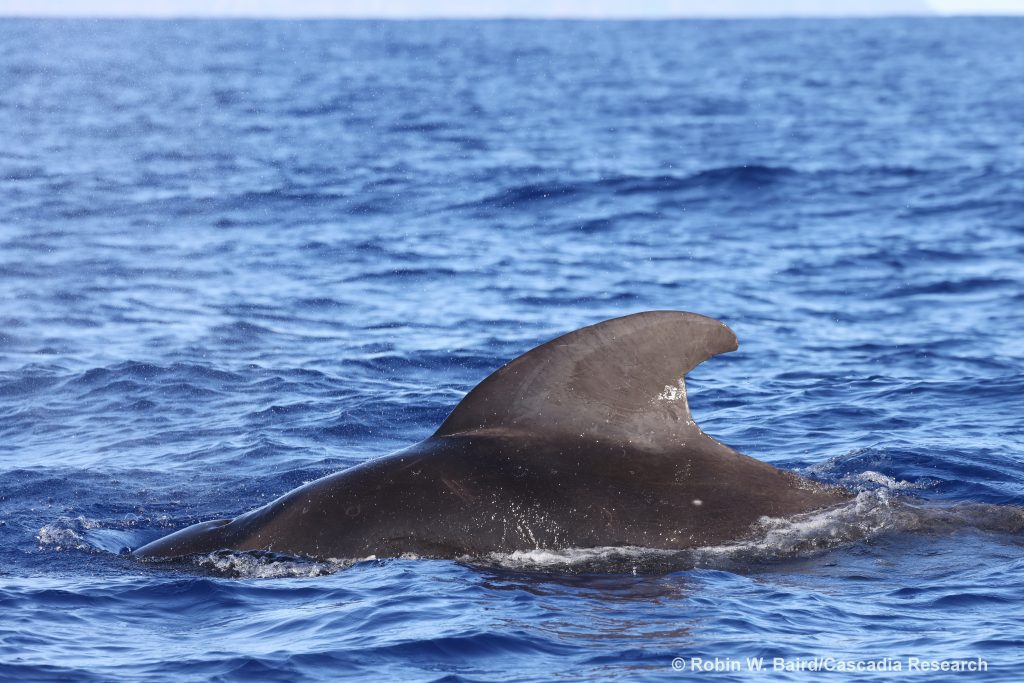
We are undertaking a ~9 day field project off Kaua’i starting on August 5th. This project is funded by the U.S. Navy as part of their Marine Species Monitoring Program and is timed to occur prior to a Submarine Command Course (SCC). Our primary goal is to deploy LIMPET satellite tags on one or more species of odontocete cetaceans prior to the SCC, to be able to examine their behavior before, during, and after the SCC. This approach has been very successful in the past as a way of examining how different species respond to Navy training activities including mid-frequency active sonar (MFAS). If you want to see what we accomplished on our last field project off the island, check out this report on our August 2022 field project.
This is the 15th year we’ve worked off Kaua’i (our first project there was in May and June 2003), and our 20th field effort off the island. In addition to our primary goal, these efforts contribute to our general understanding of what species of whales and dolphins use the area around Kaua’i and Ni’ihau, and photos obtained feed in to our photo-identification catalogs for many different species. Our work off Kaua’i in the past has really benefited by reports of whales or dolphins by local tour operators and fishermen - if you happen to be on the water off Kaua’i between August 5th and 13th and see any pilot whales, false killer whales, melon-headed whales, pygmy killer whales, killer whales, or sperm whales, please call us! If you don't have the cell number of our field crew, contact Robin Baird at "rwbaird" "at" cascadiaresearch.org and we can provide it ahead of time.
Our field crew for this project includes Colin Cornforth, Jordan Lerma, Mark Mohler, Jana Phipps, Robin Baird, and a number of volunteers.
End of project update
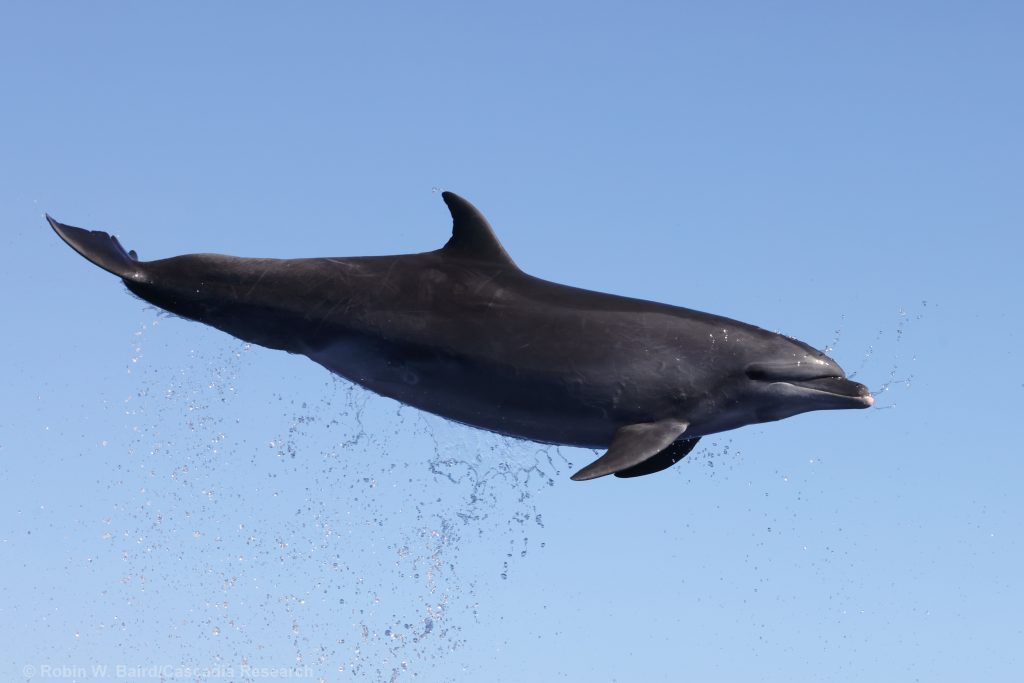
August 13th was our last day on the water. Over the nine days we made it out on the water on seven (two days we were stuck on land due to Hurricane Dora passing to the south). We had 30 encounters with six different species of dolphins and whales. As is usual off Kaua'i, rough-toothed dolphins were the most frequently encountered species, with 12 different sightings. Second-most for this trip were bottlenose dolphins (six sightings), followed by short-finned pilot whales and pantropical spotted dolphins (four sightings each), spinner dolphins (three sightings), and a single group of melon-headed whales (albeit about 200 of them). We deployed 10 LIMPET satellite tags (all the SPLASH10-F tags that record dive behavior as well as Fastloc-GPS locations), collected one biopsy sample, and took over 25,000 photos. We hope to get back to Kaua'i next year - in the meanwhile, if anyone has any photos of dolphins or whales (other than spinner dolphins and humpback whales) off Kaua'i, please reach out to us - they are extremely valuable for tracking the populations around the island.
August 11 update
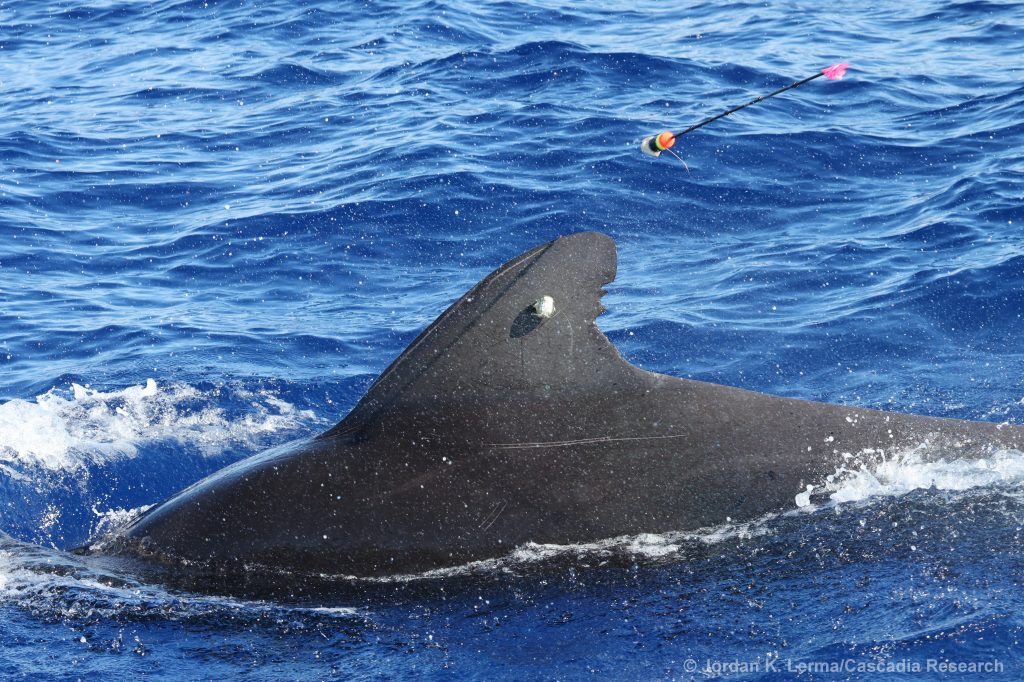
With the passing of Hurricane Dora, we missed two days on the water earlier this week, but were back out again yesterday and today. Yesterday we encountered a third group of short-finned pilot whales, and were able to deploy a LIMPET satellite tag on one adult male. This individual, HIGm0949 in our photo-ID catalog, was first documented in 2006, and has primarily been seen off Kaua'i since. This photo was taken a fraction of a section after the tag was deployed, and you can see the deployment arrow in the air above the whale, as it bounces back after deployment.
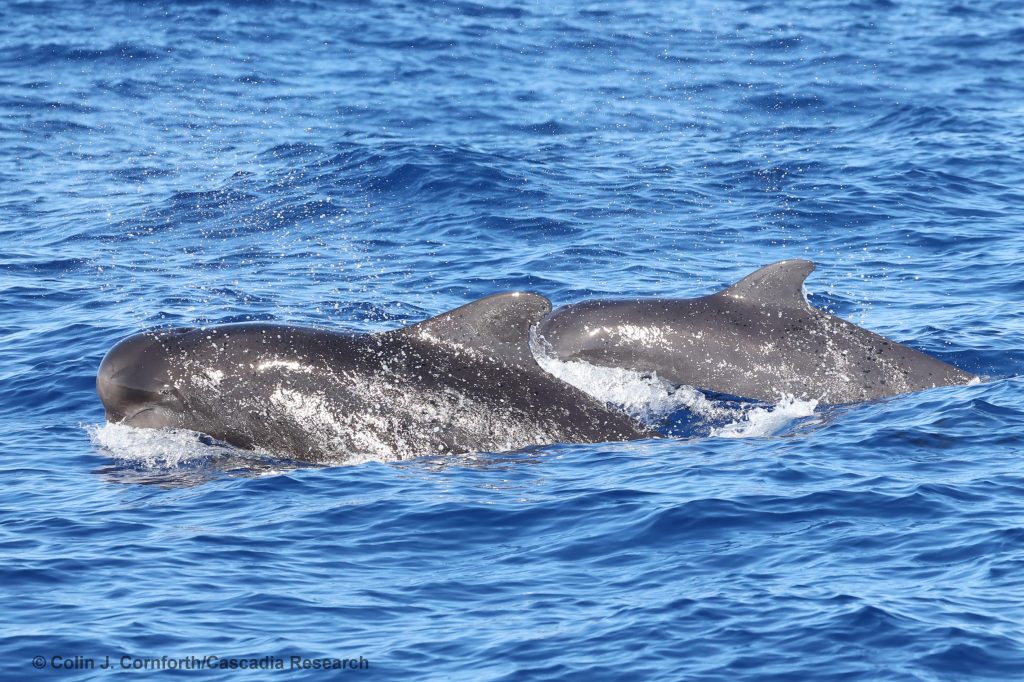
When first encountered the group was moving fast, unusual behavior for this species in Hawaiian waters. We were able to get good identification photos of most of the individuals present, to compare to our photo-ID catalog.
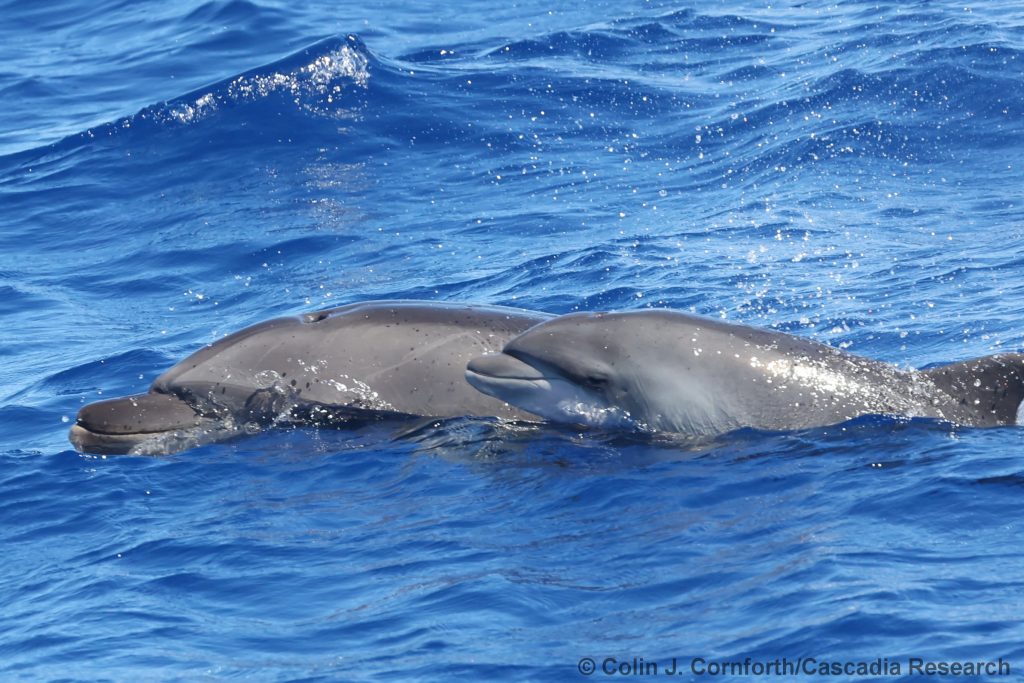
Our second encounter with bottlenose dolphins this trip, a group of about a dozen individuals that we were able to get good ID photos of for comparison with our photo-ID catalog. There is a small resident population off the island, with abundance estimated between about 100 and 120 individuals, so most of the adult individuals in the group are likely already in our catalog.
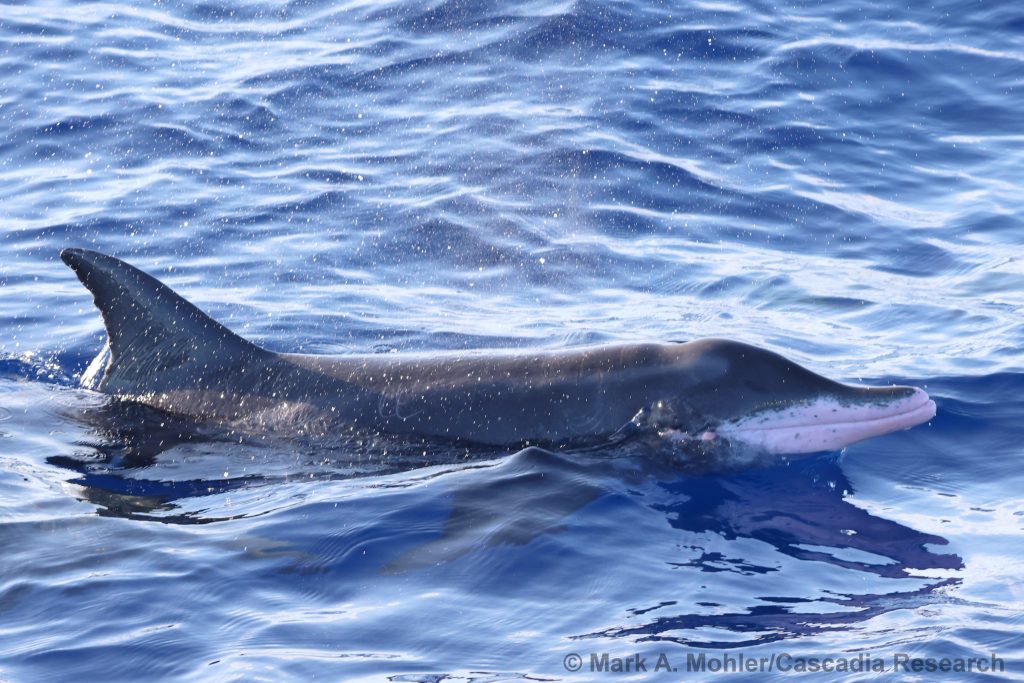
We've had several encounters with rough-toothed dolphins this trip, and have been able to get good ID photos for our catalog.
August 6 update
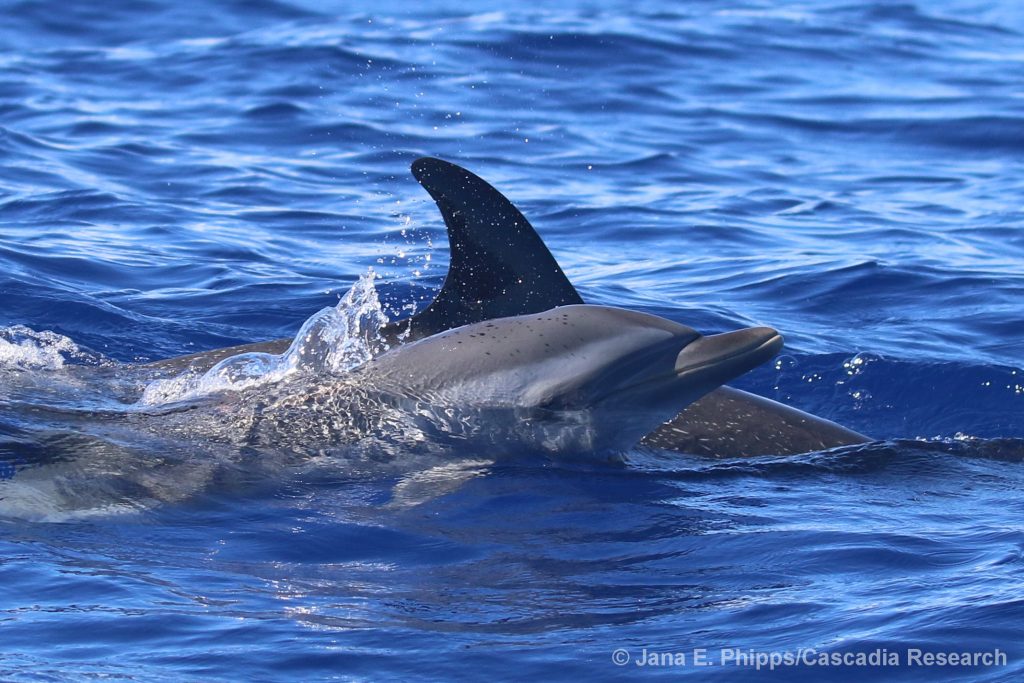
Our first two days on the water have been quite productive, covering 280 kilometers off the west side of the island, and encountering four different species of odontocetes. Our most unusual encounter was a group of about 15 pantropical spotted dolphin. Unlike the rest of the main Hawaiian Islands, there is no resident population of spotted dolphins off Kaua'i - instead the groups seen here seem to be part of a broader open-ocean population. We were able to deploy one LIMPET satellite tag on an individual in the group, and are looking forward to tracking them over the next days or weeks.
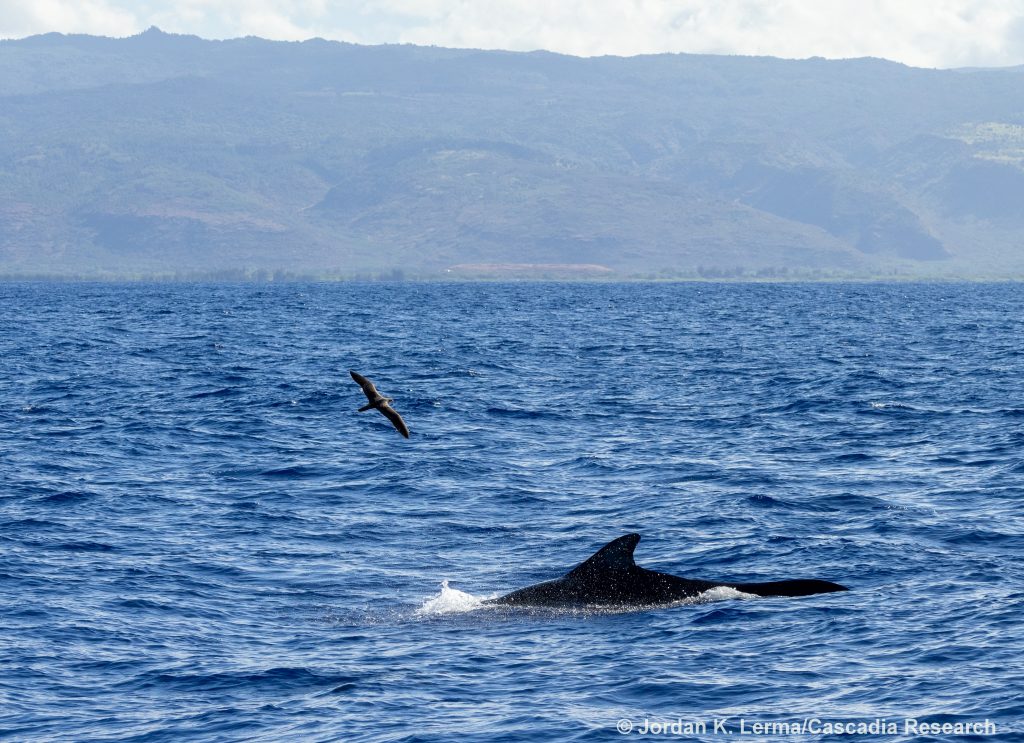
We also encountered two groups of short-finned pilot whales, and were able to get LIMPET satellite tags deployed on two individuals in one group, and one in the other. These are Argos satellite tags, but in addition to locations obtained through the Argos system, the tags also transmit Fastloc®-GPS locations up to twice an hour, as well as dive data. We have the tags programmed to record data over the next 13 days, to obtain information before, during, and after the Submarine Command Course.
Photos on this page taken under NMFS Scientific Research Permit No. 26596. Contact Robin Baird (rwbaird (at) cascadiaresearch (dot) org) for more information.